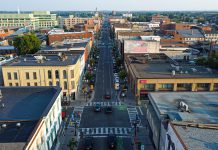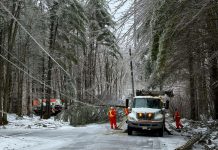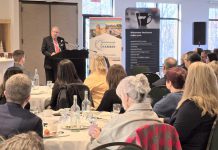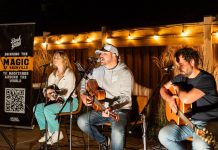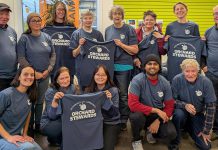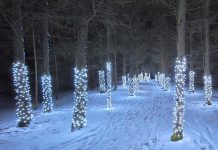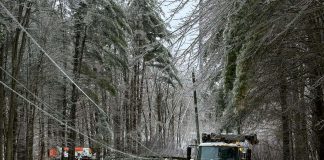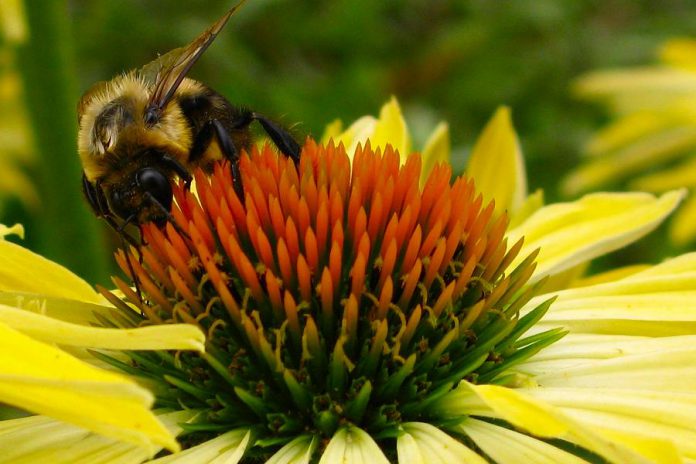
By now, we’re all aware that bees and other pollinators are disappearing at an alarming rate. Staying abreast of this situation is crucial because bees provide important pollination services that ensure we have food on the table. If it weren’t for pollinators, our world would be a very different place.
In September, Gord Miller, the Environmental Commissioner of Ontario, released his annual report and bees were front and centre. The commissioner had some very strong language on the topic.
“All the science is not done, but everything that I have before me … suggests to me that this is the biggest threat to the structure and ecological integrity of the ecosystem that I have ever encountered in my life, bigger than DDT,” he says.
The report states at in recent years large and unusual declines in honeybee populations have been observed in North American and Europe. Among these observations were above-average colony losses in Ontario. Beekeepers have been noticing higher-than-normal overwintering losses within their colonies for about the last eight years.
The report goes on to say the number of factors are believed to be at play in driving pollinator declines, including pathogens, parasites, agrochemicals, habitat degradation and loss, decreased resource diversity, climate change, and invasive species.
One of the simplest ways to help pollinators like bees in your own backyard is to plant a pollinator garden. The key to a pollinator garden is to use as many native plant species as possible. Native plants have evolved closely with insects and are well suited to meet their needs. The survival of some pollinator species is actually reliant on the availability of certain types of native plants.
Plantings aside, a good way to encourage pollinating visitors to your garden is to provide nesting sites for them. Bumblebees and many solitary bees nest in the ground and need open patches of bare soil, so leave a few unmulched areas in your garden. Dead wood provides nesting areas for a variety of pollinators such as some bees, wasps, beetles, and ants.
You can also create homemade nesting sites. Bee nesting blocks can be made out of an untreated wood block by drilling a number of holes approximately 3/4 to 3/8 inches in diameter, and four to six inches deep. Mount the block on a post or the side of a building. An ideal place would be under the eaves of a garage or shed, which gives some protection from the rain.
DIY Nests for Solitary Bees
It’s clear the plight of our pollinators needs to monitored closely. Educating on what can be done at home, work, or on the farm to reverse pollinator declines is an important first step to seeing their numbers rebound.
The local group Farms at Work has organized a workshop for this Saturday on the topic of pollinators which is a must-attend event for anyone interested in learning more.
The full-day workshop is designed for farmers, landowners, and concerned citizens. Pollination biologist Susan Chan will outline the fundamentals of pollination, as well as habitat requirements for pollinators and beneficial insects. Case studies will be presented, and strategies for mitigating threats to pollinators will be proposed.
Susan has been invited to give presentations to thousands of people across Ontario, and her extensive research is inspiring farmers and landowners to implement pollinator conservation plans on their own properties.
Also in attendance will be Dr. Rosana Pellizzari, Medical Officer of Health for Peterborough City and County. Dr. Pellizzari will speak about recent research completed by Public Health Ontario on neonicotinoid pesticides.
Everyone who attends the workshop will receive a copy of A Landowner’s Guide to Conserving Native Pollinators in Ontario, and will participate in building a nest for cavity-dwelling bees to take home for use on their own properties.
The event also features a chance to network with local stewardship organizations and regional businesses that provide pollinator-friendly plant material and services to landowners. If you operate a native plant nursery, or are part of a stewardship organization, and would like to become an exhibitor, you’re asked to get in touch with the organizers for the details.
if you’re interested in attending the workshop, tickets are $30 each and include the Landowner’s Guide, a bee nest, and lunch. The event is being held at the Douro Community Centre, 2893 Highway 28 from 9 a.m. to 4 p.m. Tickets can be purchased online at www.pollinatordayptbo.eventbrite.ca.
If you have questions or need more information, get in touch with Jay Adam at jay@farmsatwork.ca or by phone at 705-743-7671.


